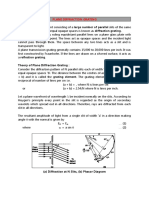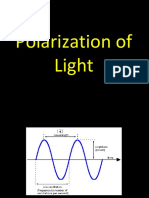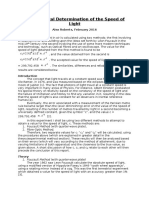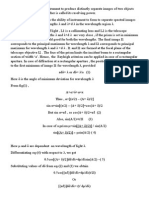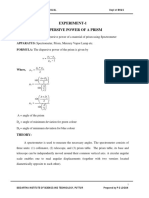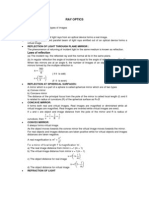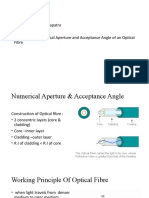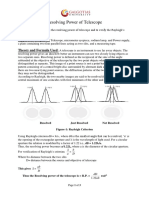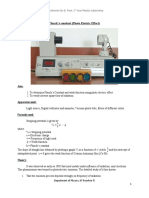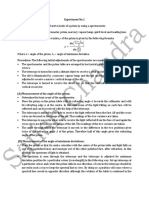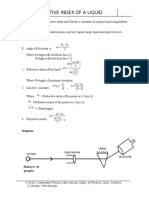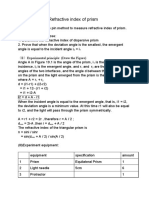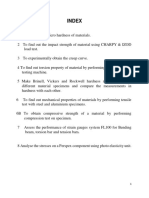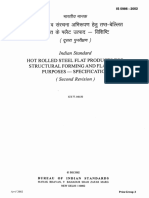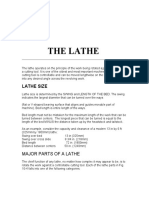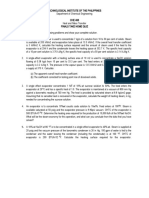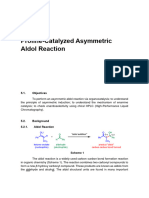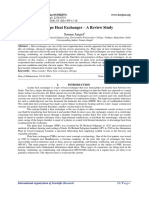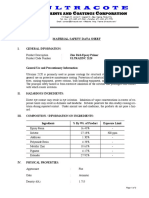0% found this document useful (0 votes)
338 views11 pagesInterference of Light
Interference of light occurs when two light waves meet and their distributions of energy interact. There are two types of interference: constructive and destructive. Constructive interference occurs when crests and troughs of waves align, amplifying the waves. Destructive interference occurs when crests and troughs cancel out, reducing wave amplitude. Young's double slit experiment demonstrated optical interference by producing alternating bright and dark fringes on a screen due to the interference of light passing through two slits.
Uploaded by
Shreenivas ThakurCopyright
© © All Rights Reserved
We take content rights seriously. If you suspect this is your content, claim it here.
Available Formats
Download as DOCX, PDF, TXT or read online on Scribd
0% found this document useful (0 votes)
338 views11 pagesInterference of Light
Interference of light occurs when two light waves meet and their distributions of energy interact. There are two types of interference: constructive and destructive. Constructive interference occurs when crests and troughs of waves align, amplifying the waves. Destructive interference occurs when crests and troughs cancel out, reducing wave amplitude. Young's double slit experiment demonstrated optical interference by producing alternating bright and dark fringes on a screen due to the interference of light passing through two slits.
Uploaded by
Shreenivas ThakurCopyright
© © All Rights Reserved
We take content rights seriously. If you suspect this is your content, claim it here.
Available Formats
Download as DOCX, PDF, TXT or read online on Scribd
/ 11




